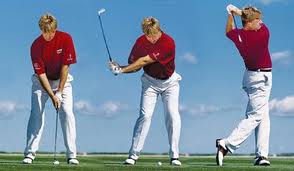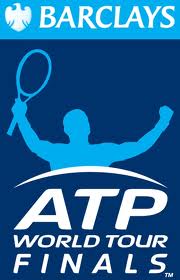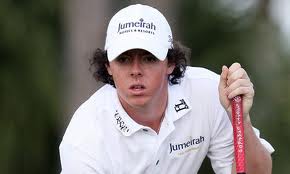A marketable sports star
Your first job in the marketable test - do you know which world sports star represents these brands?
Jumeirah
Titleist
Santander
Footjoy
Audemars Piguet
Oakley
Bennet Construction
Lough Erne Golf Club
I follow the world of golf closely. It's a great game to play for the technical precision it demands, the patience, the visualisation, the specific physical test, the appreciation and mastery of weather and terrain conditions.

Put it together
I also like the world of professional golf, the wonderful settings and golf course designs, the world appeal of the game, the personalities at the top, and how if manages to make some of the richest sportsmen on our planet. They earn great prize money for a long period of their adult lives, including competing in "men's'" competitions when they are way past their physical peak, and the aura that senior golfers have playing on their senior's tour. Their careers are very long.
This makes them ideal sponsorship material. You cannot compare with tennis. A tennis man will peak at around 26, but the top stars have generally made their mark at around 22. Their careers shouldn't go much beyond the age of 32, so at best their tournament earnings will be maximised over ten years, for a golf player, double that.
Those marketable differences
A tennis player carries sponsorships, such as for his apparel, adidas and Nike being the main players. Their athletes are dressed to look sleek, strong and colourful. The apparel companies profit from the athletic nature of the sports stars. Their athletism makes them desirable body types for most young people. Dressing Djokovic guarantees youngsters dreaming of moving and acting like him, eventually wanting to dress like him, paying three times more for the clothing than non-branded versions.

Tennis vs Golf
adidas and Nike are very present in the world of golf. The apparel is different, raising less the athletic value of the player, more his elegance, style and smartness when wearing casual gear. It's like a catwalk out there. Here the appeal is less with young people, although they too, like in tennis, want to dress like their heroes. The prices are even higher in golf, the mark-ups too, because the principle buyer is a well-to-do, middle-aged, successful person, who desires this elegant , but casual look, yet still with the clear signs of being a sportsman. So the apparel companies pay proportionately more to the golfers than to the tennis players.

Because I've been watching golf, I've been watching the allure of McIlroy, and what the sponsors are looking for. He has a soft Irish accent, one of the most pleasant of accents of the English language world, neutral, classless, a man from a "small" region on an international journey, a little bit arty and rural, with understatement, modesty and irony written into it. His looks are boyish, but ageless, a certain innocence, certainly no aggression. The soft elegance he carries is perfect for golf, and he's not a snob or hooligan or womaniser. He's available and approachable.
Can a tennis player capture all of these things? Does he need to?
I read that McIlroy made $25m from his sponsorships in 2012.
